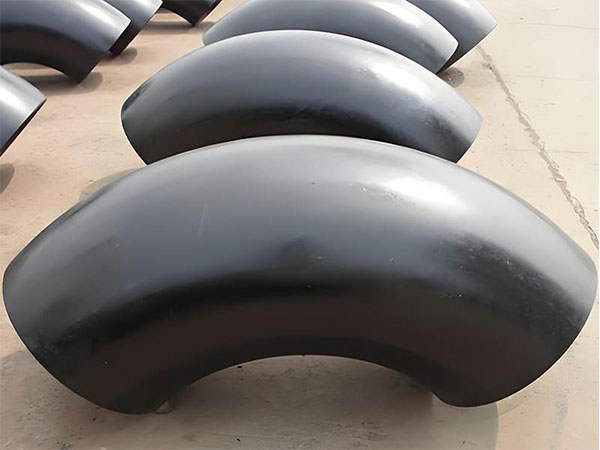Elbow is a basic pipe fitting in a pipe system, used to connect two pipes of the same or different nominal diameters. The elbow is usually bent at a certain Angle, so that the straight pipe is connected at a certain Angle, so as to achieve a change in direction. Common elbow angles are 45°, 90°, 135°, etc. The elbow is designed to ensure that the fluid at the bend loses as little energy as possible, while maintaining pipe tightness and structural strength.

Manufacturing process
Elbow There are three main manufacturing processes, including forging, casting, welding manufacturing, elbow formation includes many steps, but compared to other steel production processes, and relatively simple.
Forging: After the metal blank is heated to the appropriate temperature, it is forged into the bend shape by the mold. The elbow made by forging has high strength, toughness and compactness, and is suitable for high temperature and high pressure working conditions.
Casting: The use of molten metal poured into a pre-made mold, cooling to obtain a bend. The casting elbow is suitable for some occasions where the mechanical properties are not particularly demanding, and the cost is relatively low.
Welding manufacturing: The steel plate or pipe is first bent into the required Angle, and then the parts are connected into a whole through the welding process. The welding elbow is flexible and suitable for the production of small batches or customized products, but the welding quality has a greater impact on the final performance.
Type of elbow
Elbows are made of a variety of materials, such as alloy steel, carbon steel, stainless steel, etc., depending on the function of the pipe unit.
Carbon steel elbow: Carbon steel material, reference standards are: ASTM 234 WPB and WPC, ASTM A420 WPL6, MSS-SP-75 WPHY 42, 46, 52, 56, 60, 65 and 70.
Stainless steel elbow: Stainless steel elbow material is stainless steel (chromium and nickel chemicals added to carbon steel), the standard and grade are commonly seen in ASTM A403 WP 304/304L, 316/316L, ASTM A270, etc. It has higher strength and higher corrosion resistance than carbon steel elbows. The surface treatment is 2B or mirror, commonly used in the food industry and for sanitary purposes. General surface treatment stainless steel elbows are commonly used in highly corrosive environments in chemical plants or offshore oil and gas pipelines.
Butt weld elbow: The easiest way to connect the elbow and pipe is to weld the elbow end directly to the pipe end, which is called the butt weld (BW elbow). Butt welded elbows are primarily used at higher pressures and temperatures than other connection types of elbows.
Socket welding elbow: Socket welding elbow is also connected by end welding, and unlike butt welding elbow, the end of the socket welding elbow has a stepped area, we can insert the pipe end into this area (the step diameter of the socket welding elbow matches the outside diameter of the pipe), after insertion, welding work is performed to join them together.
Reducing elbow: also known as taper elbow, is a kind of pipe suitable for elbow and closure size are different. It is often used to distinguish pipes of different sizes in order to make noteworthy turns.
Application field
Oil and gas transmission: Elbows are used to construct complex pipe networks to ensure safe delivery of high-pressure media.
Chemical and boiler systems: In high temperature and pressure environments, the elbow helps to adjust the direction of the pipe and ensure the safe operation of the equipment.
Water supply and drainage: In building water supply, sewage treatment and other systems, the elbow makes the pipe network layout more flexible.
Industrial equipment and mechanical structures: Pipe connection components for the manufacture of mechanical parts, support structures and other equipment.
Conclusion
As a key connection in the pipeline system, the elbow can meet the requirements of complex space layout by changing the direction of the pipeline. Its manufacturing process mainly includes forging, casting and welding three ways, different processes give different mechanical properties and application scenarios of the elbow. According to the different angles, connection methods and materials, elbow has a wide range of important applications in oil, natural gas, chemical industry, construction and other fields.
